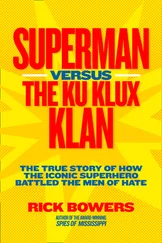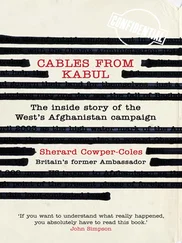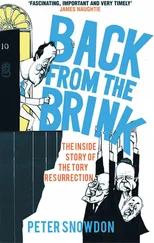Andrew Sorkin - Too Big to Fail - The Inside Story of How Wall Street and Washington Fought to Save the FinancialSystem--and Themselves
Здесь есть возможность читать онлайн «Andrew Sorkin - Too Big to Fail - The Inside Story of How Wall Street and Washington Fought to Save the FinancialSystem--and Themselves» весь текст электронной книги совершенно бесплатно (целиком полную версию без сокращений). В некоторых случаях можно слушать аудио, скачать через торрент в формате fb2 и присутствует краткое содержание. Жанр: Старинная литература, на английском языке. Описание произведения, (предисловие) а так же отзывы посетителей доступны на портале библиотеки ЛибКат.
- Название:Too Big to Fail: The Inside Story of How Wall Street and Washington Fought to Save the FinancialSystem--and Themselves
- Автор:
- Жанр:
- Год:неизвестен
- ISBN:нет данных
- Рейтинг книги:4 / 5. Голосов: 1
-
Избранное:Добавить в избранное
- Отзывы:
-
Ваша оценка:
- 80
- 1
- 2
- 3
- 4
- 5
Too Big to Fail: The Inside Story of How Wall Street and Washington Fought to Save the FinancialSystem--and Themselves: краткое содержание, описание и аннотация
Предлагаем к чтению аннотацию, описание, краткое содержание или предисловие (зависит от того, что написал сам автор книги «Too Big to Fail: The Inside Story of How Wall Street and Washington Fought to Save the FinancialSystem--and Themselves»). Если вы не нашли необходимую информацию о книге — напишите в комментариях, мы постараемся отыскать её.
Too Big to Fail: The Inside Story of How Wall Street and Washington Fought to Save the FinancialSystem--and Themselves — читать онлайн бесплатно полную книгу (весь текст) целиком
Ниже представлен текст книги, разбитый по страницам. Система сохранения места последней прочитанной страницы, позволяет с удобством читать онлайн бесплатно книгу «Too Big to Fail: The Inside Story of How Wall Street and Washington Fought to Save the FinancialSystem--and Themselves», без необходимости каждый раз заново искать на чём Вы остановились. Поставьте закладку, и сможете в любой момент перейти на страницу, на которой закончили чтение.
Интервал:
Закладка:
Kendrick R. Wilson III, adviser to the secretary of the Treasury
Federal Deposit Insurance Corporation (FDIC)
Sheila C. Bair, chairwoman
Federal Reserve
Scott G. Alvarez, general counsel
Ben S. Bernanke, chairman
Donald Kohn, vice chairman
Kevin M. Warsh, governor
Federal Reserve Bank of New York
Thomas C. Baxter Jr., general counsel
Terrence J. Checki, executive vice president
Christine M. Cumming, first vice president
William C. Dudley, executive vice president, Markets Group
Timothy F. Geithner, president
Calvin A. Mitchell III, executive vice president, communications
William L. Rutledge, senior vice president
Securities and Exchange Commission
Charles Christopher Cox, chairman
Michael A. Macchiaroli, associate director, Division of Trading and Markets
Erik R. Sirri, director, Division of Market Regulation
Linda Chatman Thomsen, director, Division of Enforcement
White House
Joshua B. Bolten, chief of staff, Office of the President
George W. Bush, president of the United States
PROLOGUE
Standing in the kitchen of his Park Avenue apartment, Jamie Dimon poured himself a cup of coffee, hoping it might ease his headache. He was recovering from a slight hangover, but his head really hurt for a different reason: He knew too much .
It was just past 7:00 a.m. on the morning of Saturday, September 13, 2008. Dimon, the chief executive of JP Morgan Chase, the nation’s third-largest bank, had spent part of the prior evening at an emergency, all-hands-on-deck meeting at the Federal Reserve Bank of New York with a dozen of his rival Wall Street CEOs. Their assignment was to come up with a plan to save Lehman Brothers, the nation’s fourth-largest investment bank—or risk the collateral damage that might ensue in the markets.
To Dimon it was a terrifying predicament that caused his mind to spin as he rushed home afterward. He was already more than two hours late for a dinner party that his wife, Judy, was hosting. He was embarrassed by his delay because the dinner was for the parents of their daughter’s boyfriend, whom he was meeting for the first time.
“Honestly, I’m never this late,” he offered, hoping to elicit some sympathy. Trying to avoid saying more than he should, still he dropped some hints about what had happened at the meeting. “You know, I am not lying about how serious this situation is,” Dimon told his slightly alarmed guests as he mixed himself a martini. “You’re going to read about it tomorrow in the papers.”
As he promised, Saturday’s papers prominently featured the dramatic news to which he had alluded. Leaning against the kitchen counter, Dimon opened the Wall Street Journal and read the headline of its lead story: “Lehman Races Clock; Crisis Spreads.”
Dimon knew that Lehman Brothers might not make it through the weekend. JP Morgan had examined its books earlier that week as a potential lender and had been unimpressed. He also had decided to request some extra collateral from the firm out of fear it might fall. In the next twenty-four hours, Dimon knew, Lehman would either be rescued or ruined. Knowing what he did, however, Dimon was concerned about more than just Lehman Brothers. He was aware that Merrill Lynch, another icon of Wall Street, was in trouble, too, and he had just asked his staff to make sure JP Morgan had enough collateral from that firm as well. And he was also acutely aware of new dangers developing at the global insurance giant American International Group (AIG) that so far had gone relatively unnoticed by the public—it was his firm’s client, and they were scrambling to raise additional capital to save it. By his estimation AIG had only about a week to find a solution, or it, too, could falter.
Of the handful of principals involved in the dialogue about the enveloping crisis—the government included—Dimon was in an especially unusual position. He had the closest thing to perfect, real-time information. That “deal flow” enabled him to identify the fraying threads in the fabric of the financial system, even in the safety nets that others assumed would save the day.
Dimon began contemplating a worst-case scenario, and at 7:30 a.m. he went into his home library and dialed into a conference call with two dozen members of his management team.
“You are about to experience the most unbelievable week in America ever, and we have to prepare for the absolutely worst case,” Dimon told his staff. “We have to protect the firm. This is about our survival.”
His staff listened intently, but no one was quite certain what Dimon was trying to say.
Like most people on Wall Street—including Richard S. Fuld Jr., Lehman’s CEO, who enjoyed one of the longest reigns of any of its leaders—many of those listening to the call assumed that the government would intervene and prevent its failure. Dimon hastened to disabuse them of the notion.
“That’s wishful thinking. There is no way, in my opinion, that Washington is going to bail out an investment bank. Nor should they,” he said decisively. “I want you all to know that this is a matter of life and death. I’m serious.”
Then he dropped his bombshell, one that he had been contemplating for the entire morning. It was his ultimate doomsday scenario.
“Here’s the drill,” he continued. “We need to prepare right now for Lehman Brothers filing.” Then he paused. “And for Merrill Lynch filing.” He paused again. “And for AIG filing.” Another pause. “And for Morgan Stanley filing.” And after a final, even longer pause he added: “And potentially for Goldman Sachs filing.”
There was a collective gasp on the phone.

As Dimon had presciently warned in his conference call, the following days would bring a near collapse of the financial system, forcing a government rescue effort with no precedent in modern history. In a period of less than eighteen months, Wall Street had gone from celebrating its most profitable age to finding itself on the brink of an epochal devastation. Trillions of dollars in wealth had vanished, and the financial landscape was entirely reconfigured. The calamity would definitively shatter some of the most cherished principles of capitalism. The idea that financial wizards had conjured up a new era of low-risk profits, and that American-style financial engineering was the global gold standard, was officially dead.
As the unraveling began, many on Wall Street confronted a market unlike any they had ever encountered—one gripped by a fear and disorder that no invisible hand could tame. They were forced to make the most critical decisions of their careers, perhaps of their lives, in the context of a confusing rush of rumors and policy shifts, all based on numbers that were little more than best guesses. Some made wise choices, some got lucky, and still others lived to regret their decisions. In many cases, it’s still too early to tell whether they made the right choices.
In 2007, at the peak of the economic bubble, the financial services sector had become a wealth-creation machine, ballooning to more than 40 percent of total corporate profits in the United States. Financial products—including a new array of securities so complex that even many CEOs and boards of directors didn’t understand them—were an ever greater driving force of the nation’s economy. The mortgage industry was an especially important component of this system, providing loans that served as the raw material for Wall Street’s elaborate creations, repackaging and then reselling them around the globe.
Читать дальшеИнтервал:
Закладка:
Похожие книги на «Too Big to Fail: The Inside Story of How Wall Street and Washington Fought to Save the FinancialSystem--and Themselves»
Представляем Вашему вниманию похожие книги на «Too Big to Fail: The Inside Story of How Wall Street and Washington Fought to Save the FinancialSystem--and Themselves» списком для выбора. Мы отобрали схожую по названию и смыслу литературу в надежде предоставить читателям больше вариантов отыскать новые, интересные, ещё непрочитанные произведения.
Обсуждение, отзывы о книге «Too Big to Fail: The Inside Story of How Wall Street and Washington Fought to Save the FinancialSystem--and Themselves» и просто собственные мнения читателей. Оставьте ваши комментарии, напишите, что Вы думаете о произведении, его смысле или главных героях. Укажите что конкретно понравилось, а что нет, и почему Вы так считаете.












